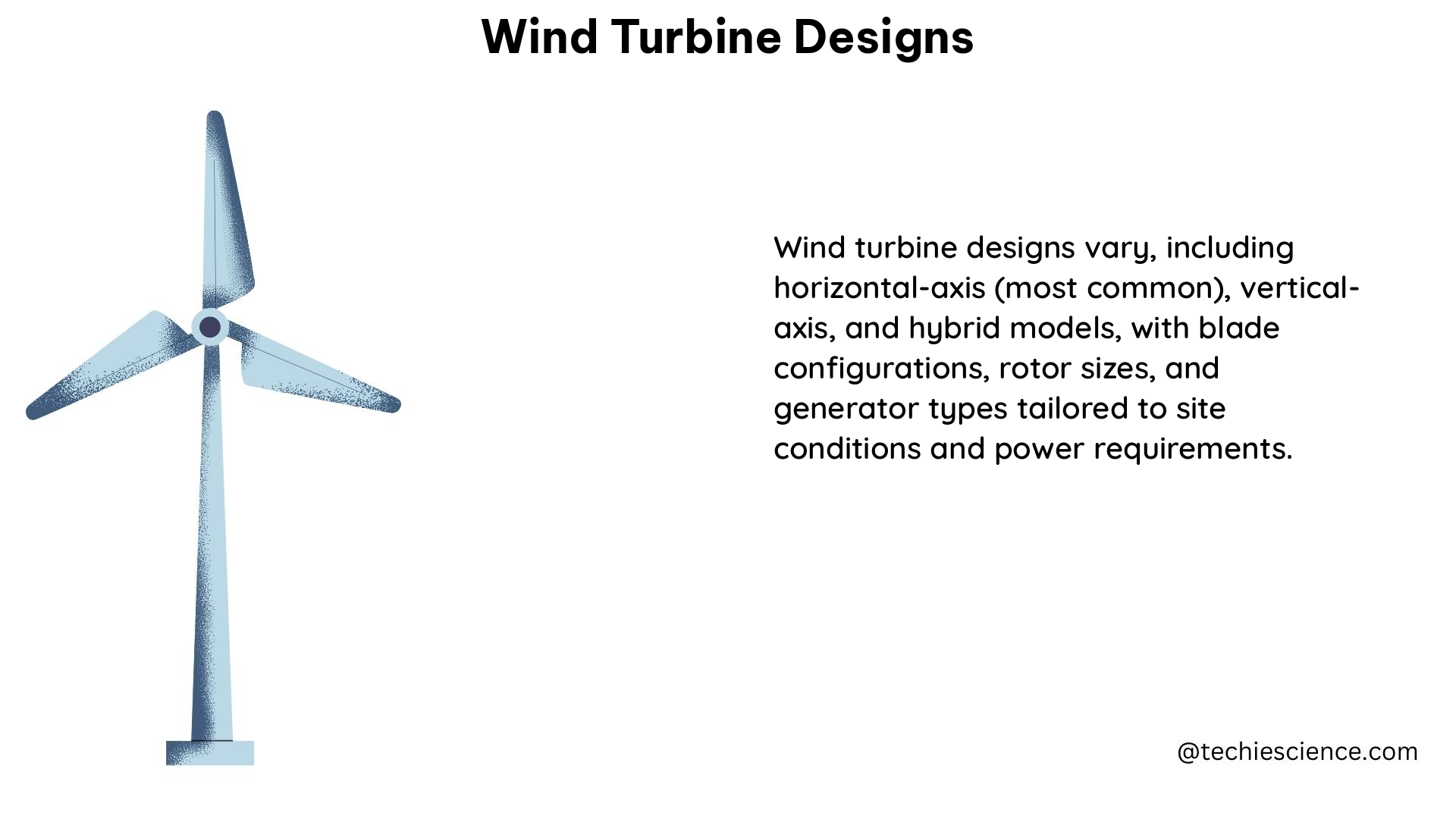Wind turbine designs have evolved significantly over the years, with a focus on increasing efficiency, reducing costs, and improving reliability. From the Sandia SMART rotor project to the latest multi-rotor Vestas concepts, the wind energy industry has seen a surge of innovative designs that push the boundaries of what’s possible.
Sandia SMART Rotor Project: Pioneering Active Rotor Control
The Sandia SMART rotor project is a prime example of advanced wind turbine design that demonstrates the potential for active control of wind turbine rotor aerodynamics. This project involved the development and field testing of a wind turbine rotor with integrated trailing-edge flaps designed for active control of the rotor aerodynamics.
Key Specifications:
– Rotor Diameter: 100 meters
– Rated Power Output: 1.5 megawatts
– Rotor Blade Material: Composite
– Trailing-Edge Flaps: Integrated for active control of rotor aerodynamics
The data acquisition system for the Sandia SMART rotor project included a Ground-Based Unit and a Rotor-Based Unit, both equipped with GPS, IMU, and other sensors to measure various aspects of the turbine’s performance. The data post-processing and analysis focused on the following areas:
- Control capability of the trailing-edge flaps
- Combined structural and aerodynamic damping observed through step actuation with ensemble averaging
- Direct observation of time delays associated with aerodynamic response
- Techniques for characterizing an operating turbine with active rotor control
Multi-Rotor Vestas Concept: Exploring Innovative Designs

In addition to the Sandia SMART rotor project, the wind energy industry has also seen the emergence of multi-rotor wind turbine designs, such as the Vestas concept. These designs have demonstrated measurable power gains compared to traditional single-rotor turbines.
Key Specifications:
– Rotor Configuration: Multi-rotor (3 rotors)
– Rotor Diameter: 42 meters per rotor
– Total Rated Power Output: 3.4 megawatts
– Improved Power Coefficient: Up to 10% increase compared to single-rotor turbines
The multi-rotor Vestas concept showcases the potential for innovative wind turbine designs to enhance energy capture and overall system performance.
DIY Wind Turbine Designs: Challenges and Considerations
For those interested in DIY wind turbine designs, it’s important to note that the process requires a thorough understanding of aerodynamics, mechanical engineering, and electrical engineering. The American Wind Energy Association (AWEA) offers a Small Wind Guidebook that provides an overview of the design and installation process for small wind turbines.
Key Considerations for DIY Wind Turbine Designs:
– Site Assessment: Evaluating wind resources, turbulence, and obstructions
– Turbine Selection: Choosing the appropriate turbine size and design for the site
– Permitting: Navigating local regulations and obtaining necessary permits
– Installation: Proper foundation, tower, and electrical system setup
Measurable Metrics for Wind Turbine Designs
When evaluating wind turbine designs, there are several key metrics to consider:
- Power Curve: A graph that shows the relationship between wind speed and power output for a given turbine.
- Capacity Factor: The ratio of actual power output to the maximum possible power output over a given period of time.
- Rotor Diameter: The diameter of the wind turbine rotor, which affects the amount of wind energy that can be captured.
- Hub Height: The height of the wind turbine hub, which also impacts the amount of wind energy that can be harnessed.
These metrics provide valuable insights into the performance and efficiency of wind turbine designs, allowing for informed decision-making and continuous improvement.
Conclusion
Wind turbine designs have come a long way, with a focus on increasing efficiency, reducing costs, and improving reliability. The Sandia SMART rotor project and the multi-rotor Vestas concept are just two examples of the innovative designs that are pushing the boundaries of wind energy technology. While DIY wind turbine designs are possible, they require a deep understanding of the underlying engineering principles.
By considering the key metrics, such as power curve, capacity factor, rotor diameter, and hub height, wind energy professionals and enthusiasts can make informed decisions and contribute to the ongoing evolution of wind turbine designs.
References
- SMART Wind Turbine Rotor: Data Analysis and Conclusions, https://www.energy.gov/sites/prod/files/smart_wind_turbine_data.pdf
- Yu Ding brings data science to wind energy | Texas A&M, https://tees.tamu.edu/news/2018/09/yu-ding-brings-data-science-to-wind-energy.html
- Data-Driven wind turbine performance assessment and quantification using SCADA data and field measurements, https://www.frontiersin.org/journals/energy-research/articles/10.3389/fenrg.2022.1050342/full
- Measurable power gains found in multi-rotor Vestas concept, https://www.windpowermonthly.com/article/1521072/measurable-power-gains-found-multi-rotor-vestas-concept
- Small Wind Guidebook, https://www.awea.org/small-wind-guidebook

The lambdageeks.com Core SME Team is a group of experienced subject matter experts from diverse scientific and technical fields including Physics, Chemistry, Technology,Electronics & Electrical Engineering, Automotive, Mechanical Engineering. Our team collaborates to create high-quality, well-researched articles on a wide range of science and technology topics for the lambdageeks.com website.
All Our Senior SME are having more than 7 Years of experience in the respective fields . They are either Working Industry Professionals or assocaited With different Universities. Refer Our Authors Page to get to know About our Core SMEs.